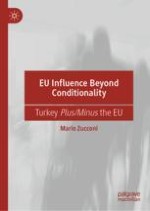2020 | OriginalPaper | Buchkapitel
2. Turkey’s Polarized Politics in the 1990s
verfasst von : Mario Zucconi
Erschienen in: EU Influence Beyond Conditionality
Aktivieren Sie unsere intelligente Suche, um passende Fachinhalte oder Patente zu finden.
Wählen Sie Textabschnitte aus um mit Künstlicher Intelligenz passenden Patente zu finden. powered by
Markieren Sie Textabschnitte, um KI-gestützt weitere passende Inhalte zu finden. powered by
